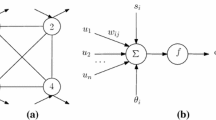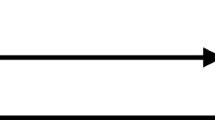Abstract
In recent years, studies on chaotic neural networks have been increased to construct a robust and flexible intelligent network resembling the human brain. To increase the chaotic performance and to reduce the time-complexity of conventional chaotic neural networks, this paper presents an innovative chaotic architecture called cascade chaotic neural network (CCNN). Cascade chaotic system is inspired by cascade structures in electronic circuits. Cascade structure is based on a combination of two or more one-dimensional chaotic maps. This combination provides a new chaotic map that has more complicated behavior than its grain maps. The fusion of this structure into the network neurons makes the CCNN more capable of confronting nonlinear problems. In the proposed model, cascade chaotic activation function (CCAF) is introduced and applied. Using the CCAF with inherent chaotic features such as increasing variability, ergodicity, maximum entropy, and free saturation zones can be promising to solve or reduce learning problems in conventional AFs without increasing complexity. The complexity does not increase because no parameter is added to the system in use. The required chaos for neural network is generated by the Li oscillator, and then when using the neural network, parameters are considered as constants. Chaotic behavior of the CCNN is investigated through bifurcation diagram. Also, prediction capability of the proposed model is verified through popular benchmark problems. Simulation and analysis demonstrate that in comparison with outstanding chaotic models, the CCNN provides more accurate and robust results in various conditions.
















Similar content being viewed by others
References
Lee RS (2006) Lee-Associator—a chaotic auto associative network for progressive memory recalling. Neural Netw 19:644–666
Düzenli G (2015) A new security approach for public transport application against tag cloning with neural network-based pattern recognition. Neural Comput Appl 26:1681–1691
Li M, Hong Q, Wang X (2022) Memristor-based circuit implementation of Competitive Neural Network based on online unsupervised Hebbian learning rule for pattern recognition. Neural Comput Appl 34:319–331
Maass W, Markram H (2002) Synapses as dynamic memory buffers. Neural Netw 15:155–161
Tang M, Wang K, Zhang J, Zheng L (2009) Fuzzy chaotic neural networks. In: Mo H (ed) Handbook of research on artificial immune systems and natural computing: applying complex adaptive technologies. Harbin Engineering University, Harshey, pp 520–555
Chen L, Aihara K (1999) Global searching ability of chaotic neural networks. IEEE Trans Circuits Syst I 48(8):974–993
Qiao J, Hu Z, Li W (2019) Hysteretic noisy frequency conversion sinusoidal chaotic neural network for traveling salesman problem. Neural Comput Appl 31:7055–7069
Abdulkarim SA, Engelbrecht AP (2021) Time series forecasting with feedforward neural networks trained using particle swarm optimizers for dynamic environments. Neural Comput Appl 33:2667–2683
Shakiba M, Teshnehlab M, Zokaie S, Zakermosh M (2008) Short-term prediction of traffic rate interval router using hybrid training of dynamic synapse neural network structure. Int J Appl Sci 8(8):1534–1540
Zweiri YH (2006) Optimization of a three-term backpropagationalgorithm used for neural network learning. Int J Comput Intell 3(4):322–327
Li Y, Fu Y, Li H, Zhang SW (2009) The improved training algorithm of back propagation neural network with self-adaptive learning rate. In: International conference on computational intelligence and natural computing, Wuhan
He Y, Xu Q, Wan J, Yang S (2018) Electrical load forecasting based on self-adaptive chaotic neural network using Chebyshev map. Neural Comput Appl 29:603–612
Nayak J, Naik B, Behera HS, Abraham A (2018) Elitist teaching–learning-based optimization (ETLBO) with higher-order Jordan Pi-sigma neural network: a comparative performance analysis. Neural Comput Appl 30:1445–1468
Nair V, Hinton GE (2010) Rectified linear units improve restricted boltzmann machines. In: International conference on machine learning
Mohammed NA, Al-Bazi A (2021) An adaptive backpropagation algorithm for long-term electricity load forecasting. Neural Comput Appl
Ng SC, Cheung CC, Leung SH (2004) Magnified gradient function with deterministic weight modification in adaptive learning. IEEE Trans Neural Netw 15(6):1411–1423
He G, Cao Z, Zhu P, Ogura H (2003) Controlling chaos in a chaotic neural network. Neural Netw 16(8):1195–1200
Olsen LF, Degen H (1985) Chaos in biological systems. Q Rev Biophys 18(2):165–225
Arbib MA (2003) The handbook of brain theory and neural networks. MIT Press, Cambridge
Zhang Y, Liu M, Ma B, Ma B, Zhen Y (2017) The performance evaluation of diagonal recurrent neural network with different chaos neurons. Neural Comput Appl 28:1611–1618
Ahmed SU, Shahjahan M, Murase K (2011) Injecting chaos in feedforward neural networks. Neural Process Lett 34(1):87–100
Chen Y, Sano H, Wakaiki M, Yaguchi T (2021) Secret communication systems using chaotic wave equations with neural network boundary conditions. Entropy 23(7):1–33
Hayou S, Doucet A, Rousseau J (2019) On the impact of the activation function on deep neural networks training. In: Proceedings of the 36th international conference on machine learning, Long Beach
Jacot A, Gabriel F, Ged FG, Hongler C (2019) Order and chaos: NTK views on DNN Normalization. Checkerboard and Boundary Artifacts. arXiv: Learning
Huang X, Xu J, Wang S (2012) Nonlinear system identification with continuous piecewise linear neural network. Neurocomputing 77(1):167–177
Ding H, Li W, Qiao J (2021) A self-organizing recurrent fuzzy neural network based on multivariate time series analysis. Neural Comput Appl 33:5089–5109
Olyaee M, Abasi H, Yaghoobi M (2013) Using hierarchical adaptive neuro fuzzy systems and design two new edge detectors in noisy images. J Soft Comput Appl 2013:1–10
Chen T, Chen H, Liu RW (1995) Approximation capability in C(R~/sup n/) by multilayer feedforward networks and related problems. IEEE Trans Neural Netw 6(1):25–30
Buscema PM, Massini G, Fabrizi M, Breda M, Torre FD (2018) The ANNS approach to DEM reconstruction. Comput Intell Int J 34(1):310–344
Rumelhart DE, Hinton GE, Williams RJ (1986) Learning representations by back-propagating errors. Nature 323:533–536
Hagan MT, Menhaj MB (1994) Training feed forward networks with the Marquardt algorithm. IEEE Trans Neural Netw 5:989–993
Behera L, Kumar S, Patnaik A (2006) On adaptive learning rate that guarantees convergence in feedforward networks. IEEE Trans Neural Netw 17(5):1116–1125
Jamil M, Zeeshan M (2019) A comparative analysis of ANN and chaotic approach-based wind speed prediction in India. Neural Comput Appl 31:6807–6819
Magoulas GD, Plagianakos VP, Vrahatis MN (2002) Globally convergent algorithms with local learning rates. IEEE Trans Neural Netw 13(3):774–779
Bhojani SH, Bhatt N (2020) Wheat crop yield prediction using new activation functions in neural network. Neural Comput Appl 32:13941–13951
Zweir YH, Whidborne J, Seneviratne AD (2003) A three-term backpropagation algorithm. Neurocomputing 50:305–318
Gashler MS, Smith MR, Morris R, Martinez T (2016) Missing value imputation with unsupervised backpropagation. Comput Intell 32(2):196–215
Kamruzzaman J (2002) Arctangent activation function to accelerate backpropagation learning. IEICE Trans Fundam Electron Commun Comput Sci E85A(10):2373–2376
Bilski J (2000) The backpropagation learning with logarithmic transfer function. In: Proceeding fifth conference on neural networks and soft computing, Poland
Pedamonti D (2018) Comparison of non-linear activation functions for deep neural networks on MNIST classification task. http://arxiv.org/abs/1804.02763
Clevert D-A, Unterthiner T, Hoc S (2016) Fast and accurate deep network learning by exponential linear units (ELUS). In: ICLR
He K, Zhang X, Ren S, Sun J (2015) Delving deep into rectifiers: surpassing human-level performance on ImageNet classification. In: IEEE international conference on computer vision (ICCV), Santiago
Kim D, Kim J, Kim J (2020) Elastic exponential linear units for convolutional neural networks. Neurocomputing 406:253–266
Asaduzzaman M, Shahjahan M, Murase K (2009) Faster training using fusion of activation functions for feed forward neural networks. Int J Neural Syst 19(6):437–448
Demir FB, Tuncer T, Kocamaz AF (2020) A chaotic optimization method based on logistic-sine map for numerical function optimization. Neural Comput Appl 32:14227–14239
Yang D, Li G, Cheng G (2007) On the efficiency of chaos optimization algorithms for global optimization. Chaos Solitons Fractals 34(4):1366–1375
Stergiou K, Karakasidis TE (2021) Application of deep learning and chaos theory for load forecasting in Greece. Neural Comput Appl 33:16713–16731
Gomes DS, Ludermir GS, Lima TB (2011) Comparison of new activation functions in neural network for forecasting financial time series. Neural Comput Appl 20:417–439
Sodhi SS, Chandra P (2014) Bi-modal derivative activation function for sigmoidal feedforward networks. Neurocomputing 143(2):182–196
Wang L, Meng Z, Sun Y, Guo L, Zhou M (2015) Design and analysis of a novel chaotic diagonal recurrent neural network. Commun Nonlinear Sci Numer Simul 26(1–3):11–23
Kabir ANME, Uddin AFMN, Asaduzzaman M, Hasan MF, Hasan MI, Shahjahan M (2012) Fusion of chaotic activation functions in training neural network. In: 7th International conference on electrical and computer engineering, Dhaka
Ott E (2002) Chaos in dynamical systems. Cambridge University Press, New York
Tao Q, Sun Z, Kong K (2012) Developing learning algorithms via optimized discretization of continuous dynamical systems. IEEE Trans Syst Man Cybern Part B 42(1):140–149
Deng L, Li D, Cai Z, Cai Z, Hong L (2020) Smart IoT information transmission and security optimization model based on chaotic neural computing. Neural Comput Appl 32:16491–16504
Zhou Y, Bao L, Chen CP (2014) A new 1D chaotic system for image encryption. Signal Process 97:172–182
Zhou Y, Hua Z, Pun CM, Chen CLP (2015) Cascade chaotic system with applications. IEEE Trans Cybern 45(9):2001–2012
Jakimosk G, Subbalakshmi K (2007) Discrete Lyapunov exponent and differential cryptanalysis. IEEE Trans Circuits Syst II Express Briefs 54(6):449–501
Wong MHY, Liu JNK, Shum DTF, Lee RST (2009) The modeling of fuzzy systems based on Lee-Oscilatory Chaotic Fuzzy Model (LOCFM). In: PHYSCON 2009, Catania
Lorenz E (1963) Deterministic nonperiodic flows. J Atmos Sci 20(2):130–141
Palmer TN (1993) Extended-range atmospheric prediction and the Lorenz model. Bull Am Meteor Soc 74(1):49–65
Ardalani MF, Zolfaghari S (2010) Chaotic time series prediction with residualanalysis method using hybrid Elman-NARX neural networks. Neurocomputing 73(13):2540–2553
Sello S (2001) Solar cycle forecasting: a nonlinear dynamics approach. Astron Astrophys 377(1):312–320
Author information
Authors and Affiliations
Corresponding author
Ethics declarations
Conflict of interest
The authors declare that there is no conflict of interest regarding the publication of this paper.
Additional information
Publisher's Note
Springer Nature remains neutral with regard to jurisdictional claims in published maps and institutional affiliations.
Rights and permissions
About this article
Cite this article
Abbasi, H., Yaghoobi, M., Teshnehlab, M. et al. Cascade chaotic neural network (CCNN): a new model. Neural Comput & Applic 34, 8897–8917 (2022). https://doi.org/10.1007/s00521-022-06912-3
Received:
Accepted:
Published:
Issue Date:
DOI: https://doi.org/10.1007/s00521-022-06912-3




